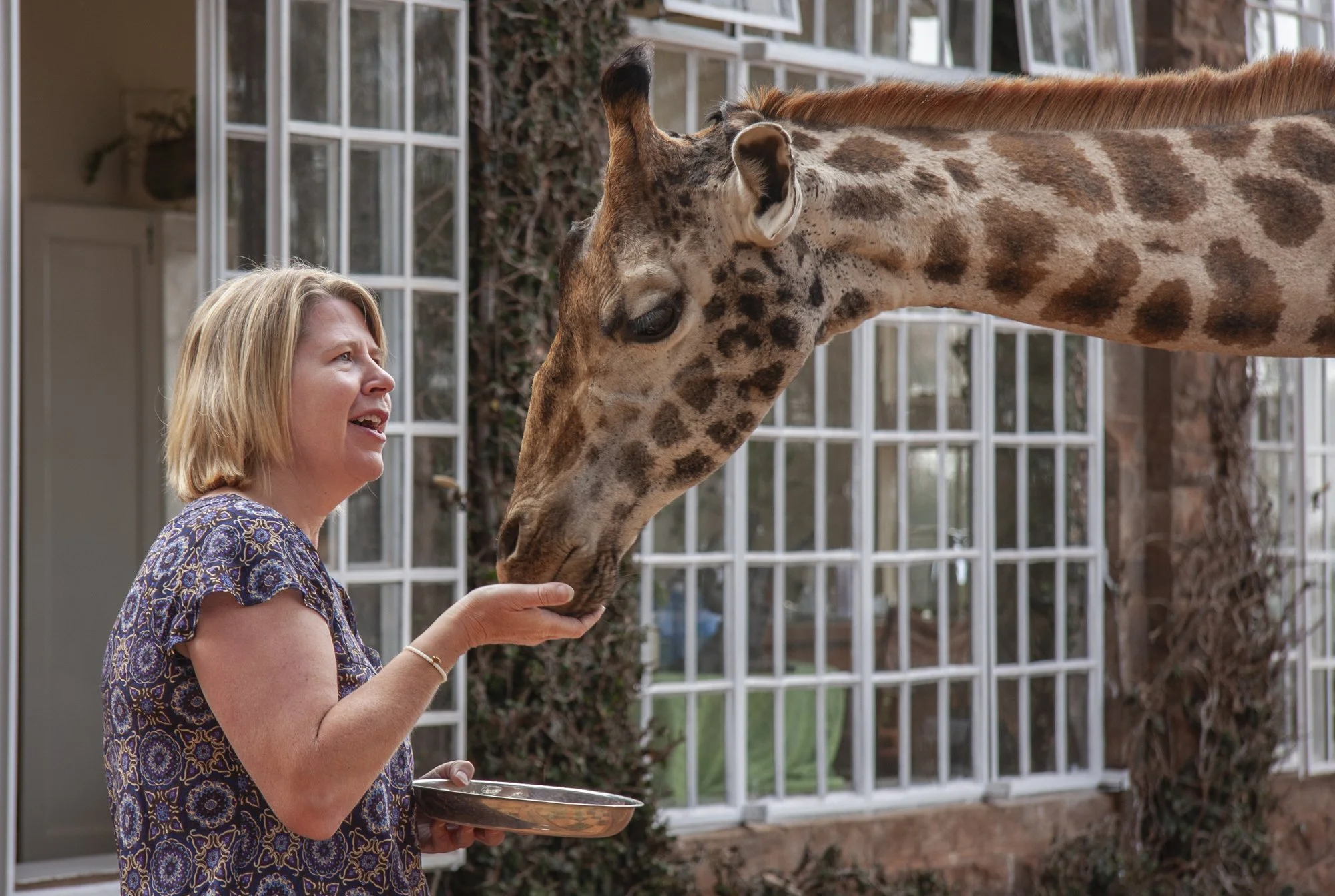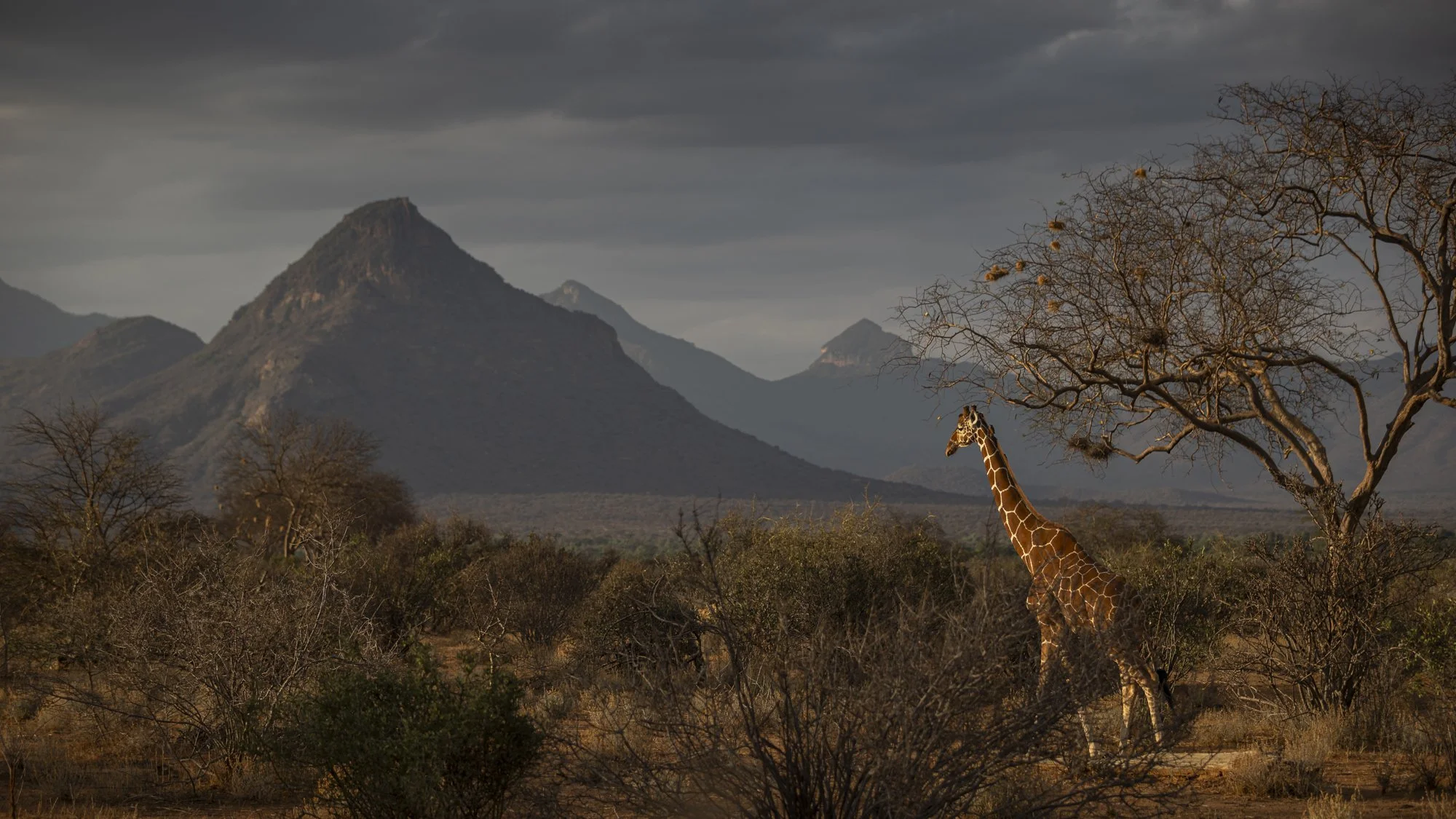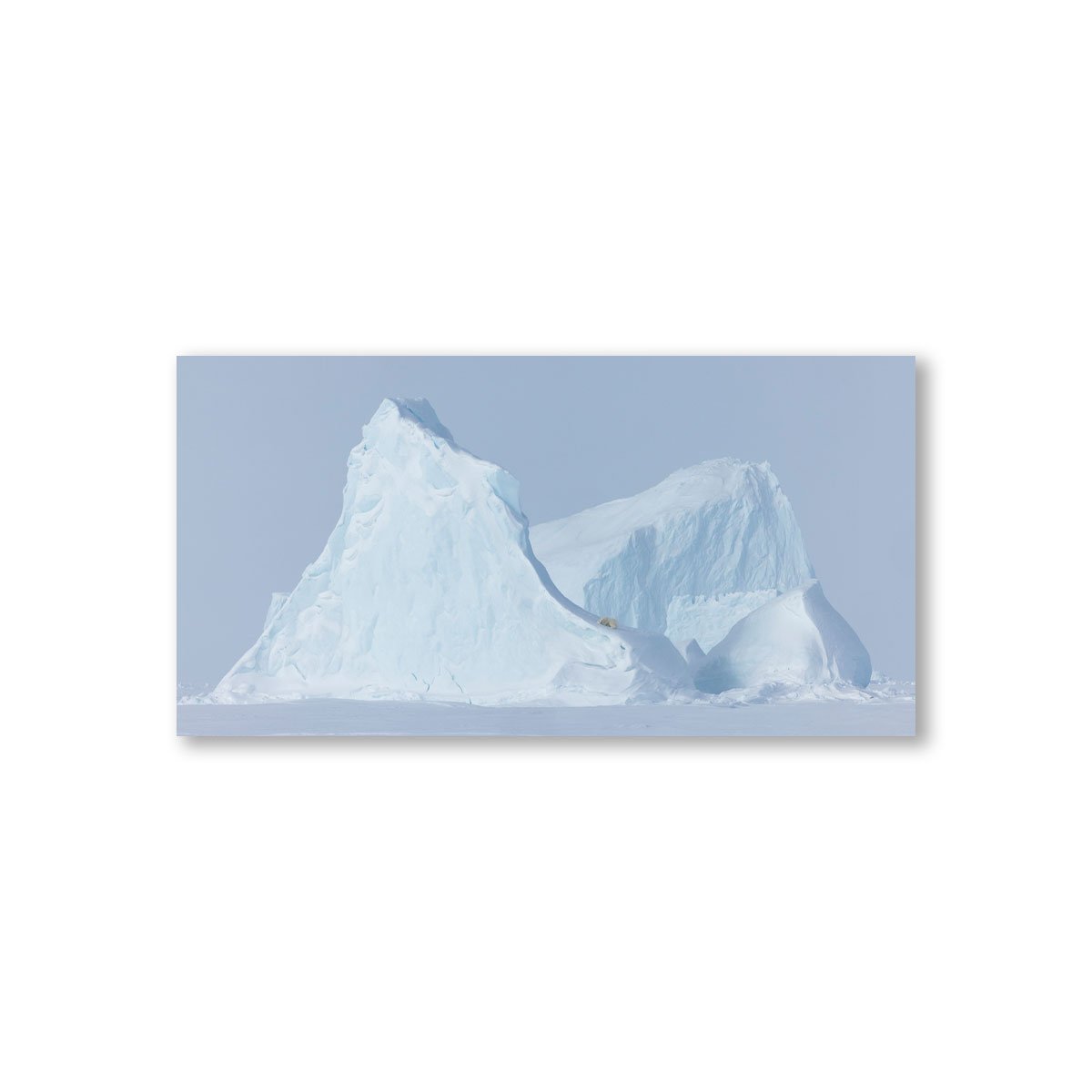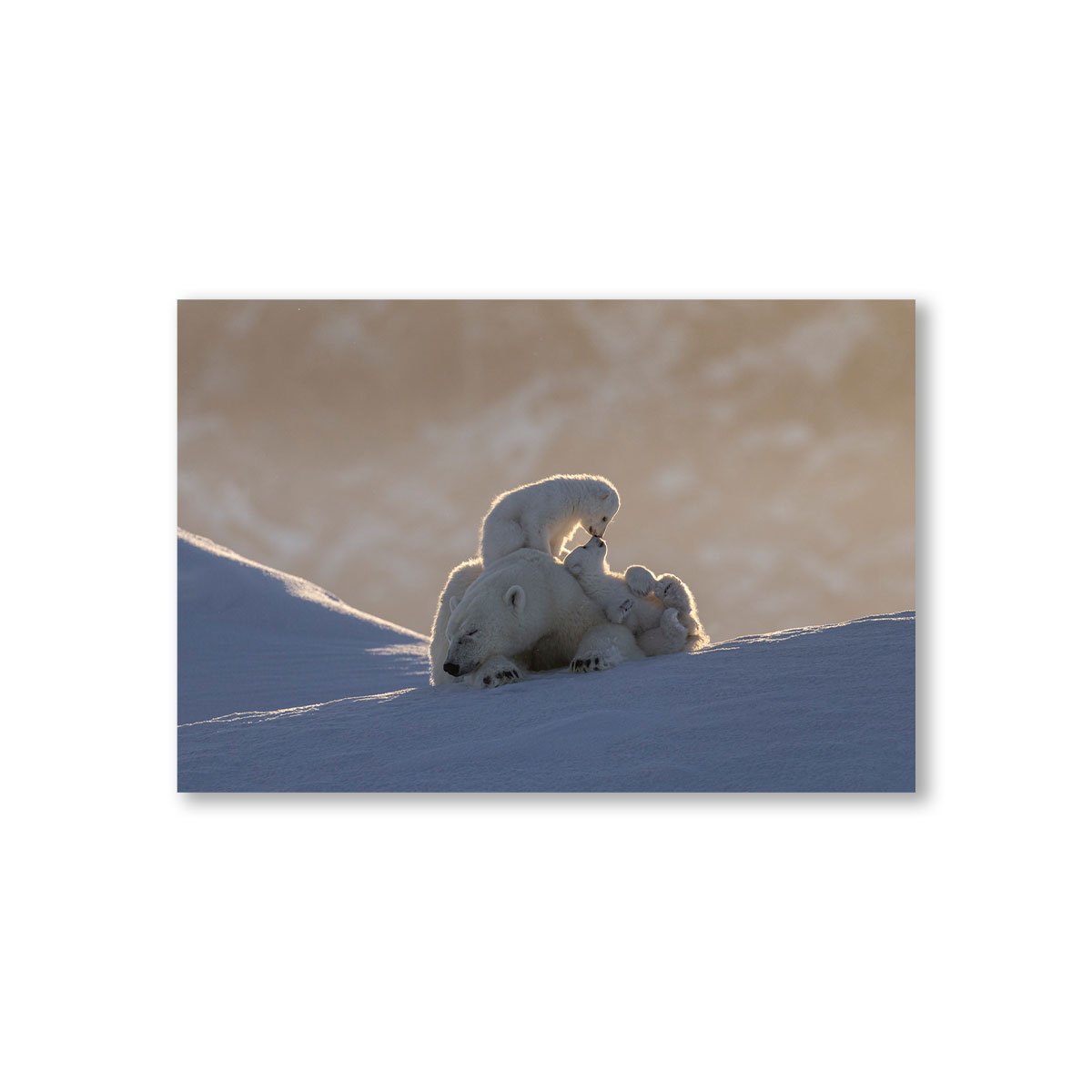FROM FALL TO FIRST STEPS: SOME FASCINATING GIRAFFE FACTS
Image of Author feeding a Giraffe at Giraffe Manor, Narobi
World Giraffe Day 21st June
On the eve of World Giraffe Day which is a wonderful opportunity to celebrate the beauty & uniqueness of Giraffes, I wanted to share some giraffe photos from my portfolio both in the past & award winning prints from the present (scroll down for those) & also some thoughts & tips about how I like to photograph one of my favourite animals in the wild.
Leopards & Polar Bears might make my heart beat faster, but a giraffe will always make me smile. There’s something about their ungainly elegance & curiosity that makes me want to stop & watch them whenever I see them. They are a wonderful subject to photograph, particularly at sunrise & sunset. I’ve had some wonderful memorable encounters with giraffes including feeding several of them at the wonderful Giraffe Manor as seen in this giraffe photo above, but a sighting over 15 years ago remains to this day one of the most emotional I’ve ever experienced. It was seeing a baby giraffe’s first steps.
A new born giraffe is cleaned by its mother
Giraffes are nature’s skyscrapers — tall, majestic, and full of surprises. But one of the most amazing parts of their life story is how it all begins: a dramatic six-foot fall into the world followed by walking within hours. And I was a witness to all that thanks to our guide Joseph who spotted a giraffe at least half a mile away & knew the giraffe was about to give birth.
We raced on to the scene & the giraffe calf had just dropped to the ground. Then began a rollercoaster of emotions as we willed the giraffe calf to stand & take its first steps. Despite encouragement from its mother & another female the calf would attempt to stand & fall down repeatedly. The poor calf seemed exhausted.
As the clock ticked on we were also concerned that lions or hyenas might pick up the scent of blood from the placenta so as there was more than one vehicle on the scene we formed a guard to try & shield the giraffes from predators. It wasn’t until an hour had passed that it was steady on its feet & was able to nurse from its mother. Everyone breathed a huge sigh of relief! It was an anxious hour of watching & waiting before the pair moved off to join the rest of the herd.
Giraffe mother & chaperone form a guard over the new born calf
A caveat here- The giraffe photos in this blog were taken whilst I was just starting my photography journey & perhaps don’t do it justice, but hope you are able to see the emotion i& vulnerability in these precious first moments between mother & calf.
A new born giraffe calf struggles to its feet
At last the new born giraffe calf is on its feet and using its mothers legs as protection
Want to know more about baby giraffes- here’s a list of the top 10 fascinating facts about giraffe birth to their very first steps.
1. Giraffes Give Birth Standing Up
Unlike many animals that lie down to give birth, giraffe mothers remain standing. This means their babies drop from about 6 feet (1.8 meters) straight to the ground. That might sound rough, but it’s perfectly natural — the fall helps break the umbilical cord and kickstart the calf’s breathing.
2. Newborn Giraffes Are Already 6 Feet Tall
A baby giraffe, called a calf, is born at an incredible height of about 6 feet (1.8 meters) and weighs 100 to 150 pounds (45 to 70 kg). That’s taller than most adult humans — at birth!
3. They Can Stand Within 30 Minutes
Within just half an hour, the newborn calf is struggling to its feet. This is a critical milestone in the wild, where predators like lions and hyenas are always nearby. Standing quickly means survival.
4. First Steps Happen Within 1–2 Hours
After standing, the calf starts to walk — often within an hour of birth. These wobbly but determined first steps are essential for following their mother and escaping danger.
5. Nursing Starts Early for a Strong Start
As soon as the calf can walk, it starts nursing from its mother. The first milk, called colostrum, is packed with nutrients and antibodies that help protect the baby from disease.
6. Calves Can Run on Day One
Amazingly, many giraffe calves can run within a few hours of being born. Their survival instinct kicks in fast, giving them a fighting chance in the wild.
7. They Bond Closely With Mom
The mother and baby form a strong bond right away. Calves stay close to their mothers for the first few weeks and often recognize her by scent and voice.
8. Survival Is a Challenge: 50% Don’t Make It
Despite their fast development, about half of giraffe calves in the wild don’t survive their first year. Predators like lions and leopards are a constant threat, especially when calves are small and vulnerable.
9. Giraffe "Nurseries" Offer Safety in Numbers
In the wild, giraffe mothers often form nursery groups, where several calves stay together under the watch of one or more adults. This helps protect the young and allows mothers to feed or rest.
10. Captive Births Are Closely Watched
In zoos and wildlife parks, giraffe births are carefully monitored — sometimes even live-streamed, as with the famous April the Giraffe in 2017. These births raise awareness about giraffe conservation and how special these animals are.
If you love Giraffes, why not invest in one my Giraffe Limited Edition Prints
Garden of Eden, Namunyak Conservancy 2023
The Giraffe limited edition print above is probably my favourite photograph to date taken of this charismatic animal. I was staying at the beautiful Sarara situated in the Namanyak Conservancy & this is home to the Reticulated giraffe, which was a sub species I hadn’t seen before. I am increasingly drawn to trying to capture animals in their environment, particularly when they are as beautiful as this. On this afternoon all the elements came together as this single giraffe moved across the semi desert framed by the Matthews Range in the background, all illuminated by late afternoon golden light.
I was gratified to learn that this image was chosen as a May finalist for this years Greatest Wildlife Photographer Kenya competition.
A few facts about Reticulated Giraffe-
“Reticulated” means net like & refers to the white lines that form the honeycomb pattern across he giraffe’s coat with the pattern being unique to each giraffe
Reticulated Giraffes are mostly found in Northern Kenya with Namunyak Conservancy their most important stronghold
They have lost nearly 50% of their population in the last 30 years due to poaching and habitat loss. With fewer than 16,000 remaining in the wild, they are now listed as Endangered on the IUCN Red List
U Two, Masai Mara 2022
A favourite way of mine to photograph Giraffes is using a high key approach, particularly against a backdrop of a cloudy sky. I think it lends itself very well to enable their beautiful graphic patterns to stand out as in this giraffe print. I had spotted these two giraffe bulls who were engaged in “necking” in a battle for dominance. As they were behind bushes, I knew that I had to use my longest lens so that I could try & isolate their necks & then I composed for black and white by overexposing the image. This Giraffe photo captures the moment just before they started swinging their necks, when they look like a mirror image of each other stripped of all distractions.
More Giraffe prints available via my Print Shop- check my Open Editions
Take advantage of my SUMMER offer which runs till he end of August with 15% off all new sales & to help support Giraffe conservation I will match 15% of sales on any Giraffe print sold.
Want to support Giraffe Conservation on World Giraffe Day?
The wild giraffe population is estimated at around 117,000 individuals. However since the 1980s, the giraffe population has decreased by approximately 30% with several giraffe subspecies are at particular risk of extinction, including the Kordofan, Rothschild's, West African, and Angolan giraffes.
The leading organization working to protect giraffe populations is the Giraffe Conservation Foundation who are monitoring populations, understanding their distribution, and advocating for conservation policies.
You can also adopt a baby orphan reticulated giraffe called Zawadi for as little as $5 per month donation via Reteti Elephant Sanctuary which are an amazing charity set up to rescue & rehabiliate orphaned & abandoned elephant calves.











